Complete Solutions to Solved Examples of chapter ORGANIC COMPOUNDS WITH FUNCTIONAL GROUP of Class 12 book with complete answers and questions
| Class 12 | CHEMISTRY |
| Chapter | ORGANIC COMPOUNDS WITH FUNCTIONAL GROUP |
| CENGAGE CHEMISTRY | Solved Examples |
| Number Of Questions | 12 |
| Academic Year | 2023-24 |
Distinguish between the following pairs:
`{:((I),,.(II)),(a.(PhNH_(3))_(2)^(+)SO_(4)^(2-)`,and,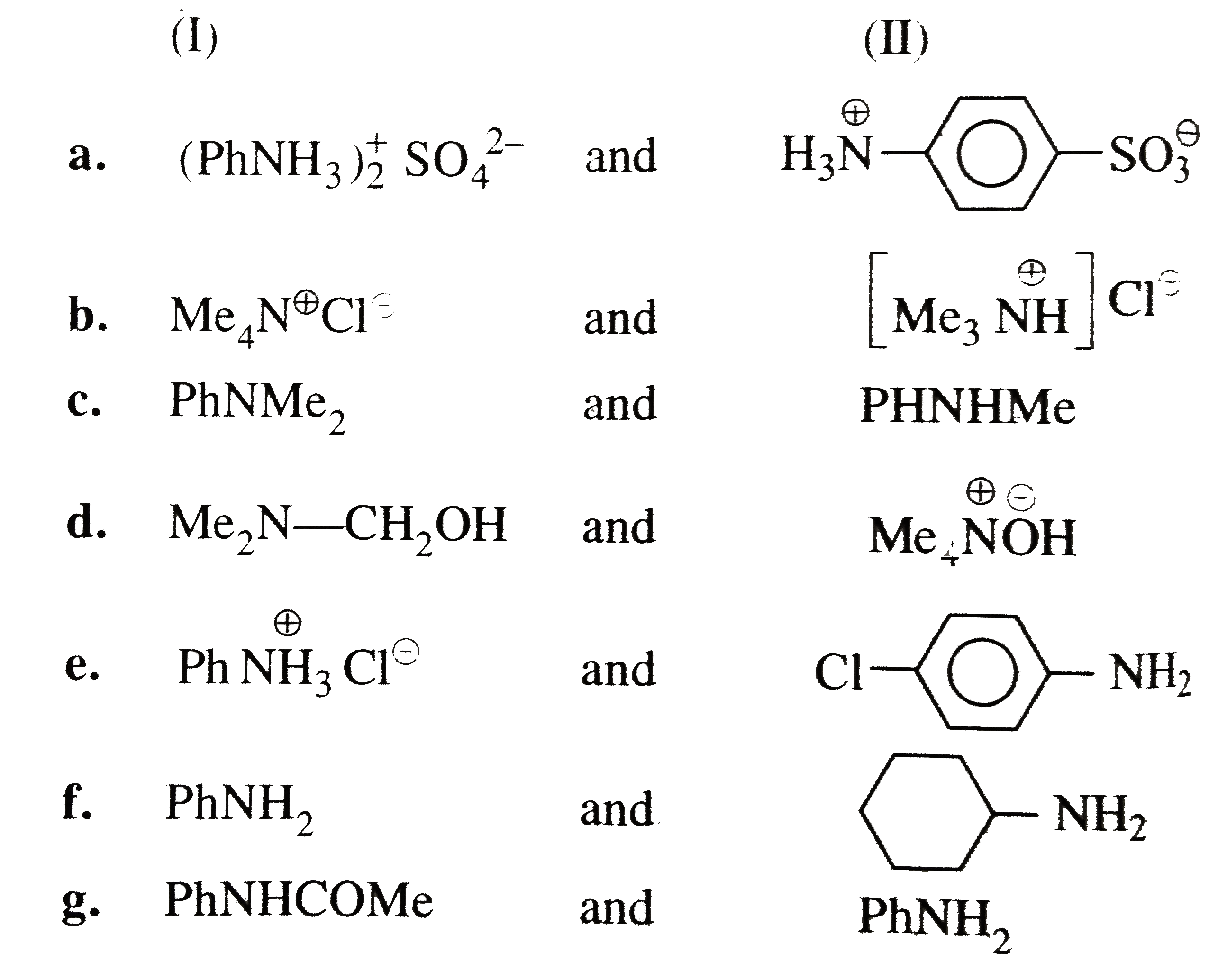 ,(b.`Me_(4)N^(o+)CI^(Theta)`,and,`[Me_(3)overset(o+)NH]CI^(Theta)),(c.PhNMe_(2)`,and,PHNHMe),(d.`Me_(2)N-CH_(2)OH`,and,`Me_(4)overset(o+)Noverset(Theta)OH),(e.Phoverset(o+)(NH_(3))CI^(Theta)`,and,(f.`PhNH_(2)`,and,(g.PhNHCOMe,and,`PhNH_(2)):}` View Solution
,(b.`Me_(4)N^(o+)CI^(Theta)`,and,`[Me_(3)overset(o+)NH]CI^(Theta)),(c.PhNMe_(2)`,and,PHNHMe),(d.`Me_(2)N-CH_(2)OH`,and,`Me_(4)overset(o+)Noverset(Theta)OH),(e.Phoverset(o+)(NH_(3))CI^(Theta)`,and,(f.`PhNH_(2)`,and,(g.PhNHCOMe,and,`PhNH_(2)):}` View SolutionComplete the following reactions.
a. `PhNO_(2) overset(Zn+aq.NH_(4)CI)rarr (I)`
b. `p-Me-C_(6)H_(4)NO_(2) overset(As_(2)O_(3)//Aq.NaOH)rarr(II)`
c. `m-Me-C_(6)H_(4)NO_(2) overset(LAH)rarr(III)`
d. `PhNO_(2) overset(Zn+Alc.NaOH)rarr(IV)`
e. `p-Me-C_(6)H_(4)NO_(2) underset(underset(Excess Zn//NaOH)(or))overset(H_(2)N NH_(2)//"Raney "Ni)rarr (V)`
f. `Ph overset(o+)N_(2) Br^(Theta) overset(Na_(2)SO_(3))rarr (VI)`
g. `p-Et -C_(6)H_(4)overset(o+)(N_(2)) Br^(Theta) underset("power")overset(Cu "bronze")rarr (VII)`
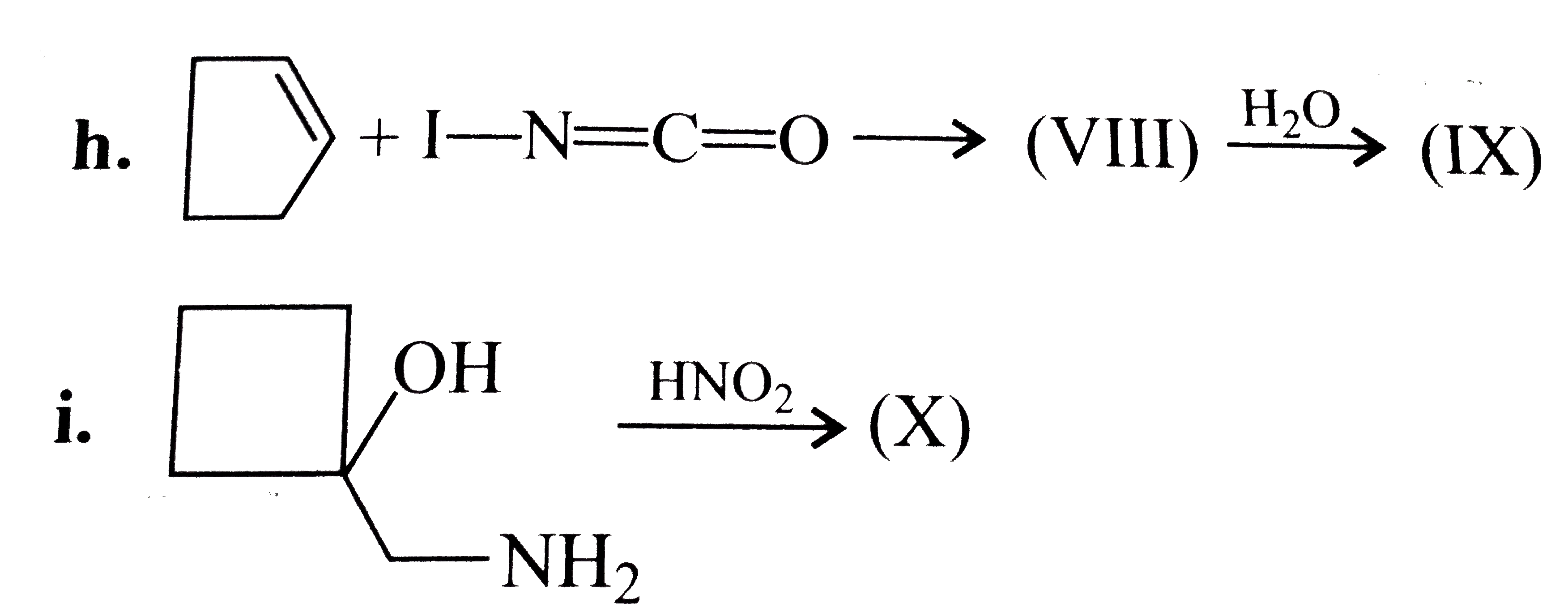 View Solution
View SolutionGive the reagents in the following reactions:
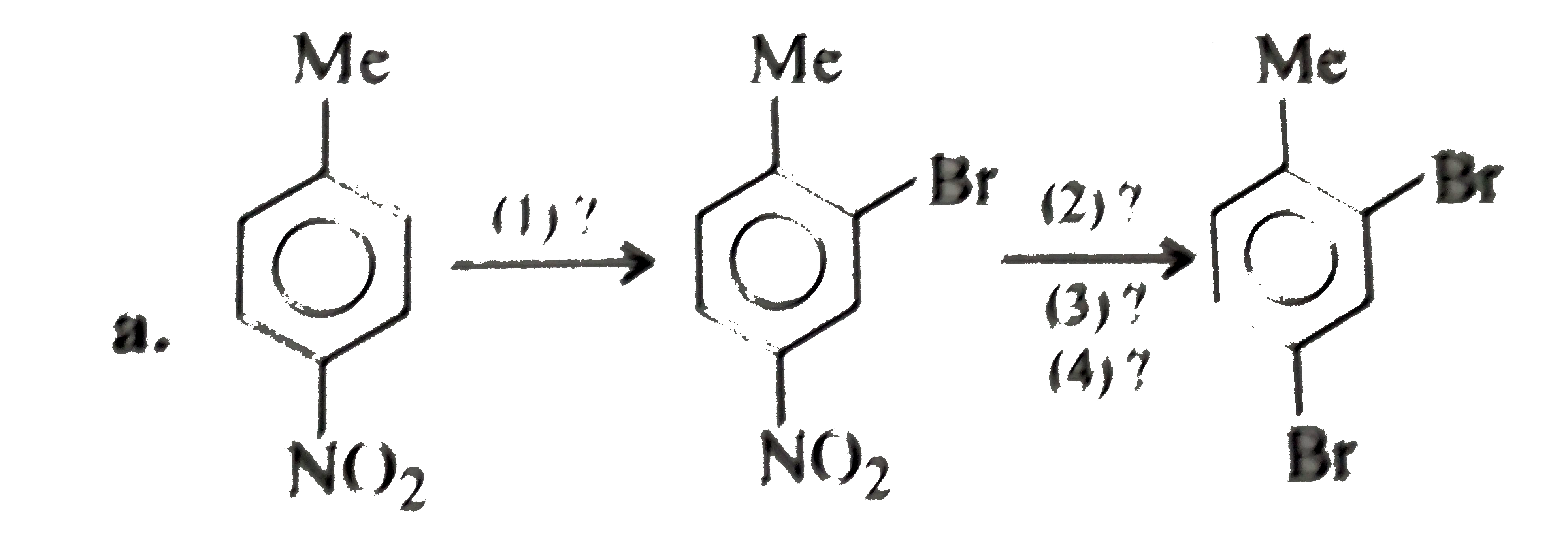

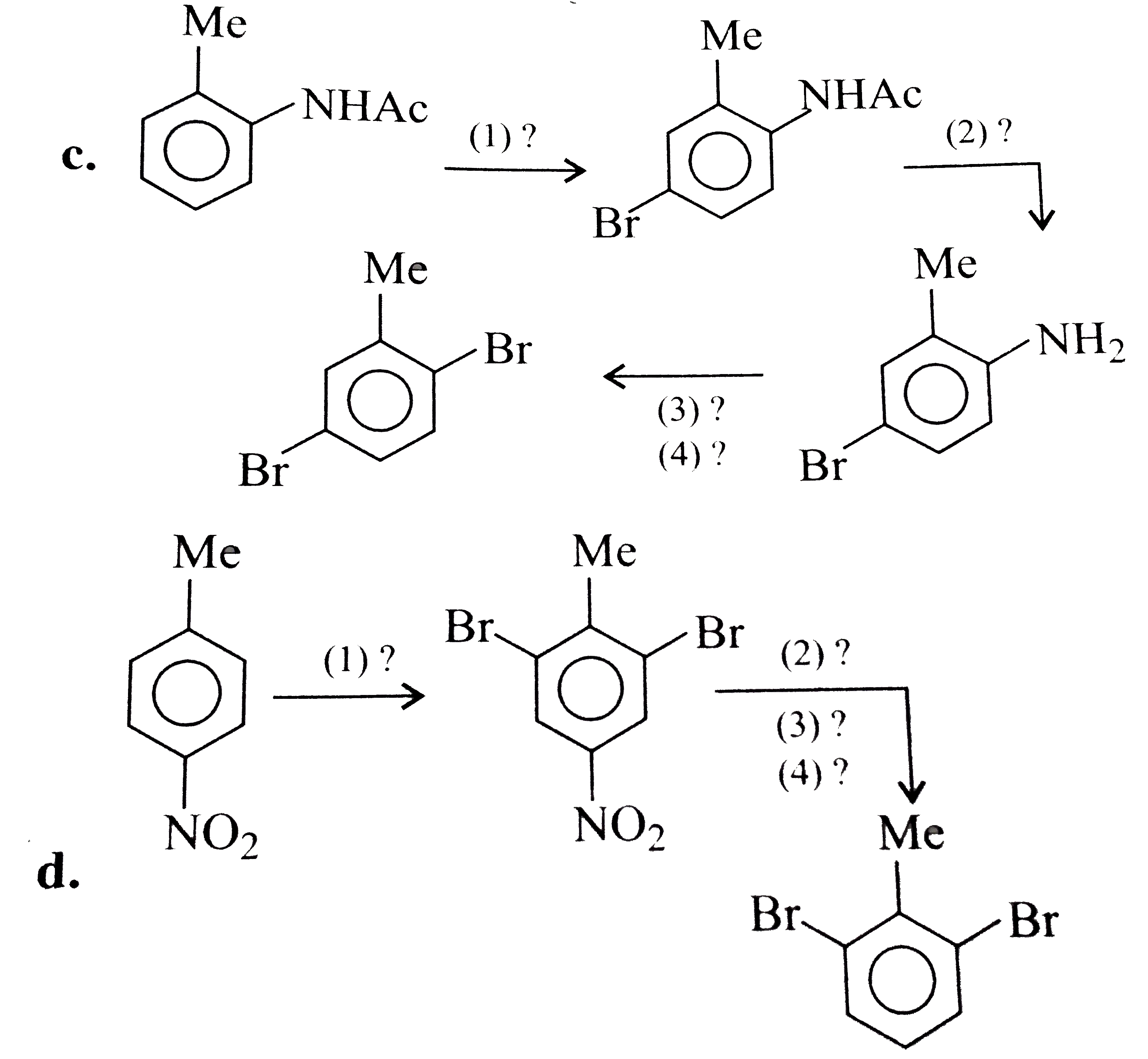
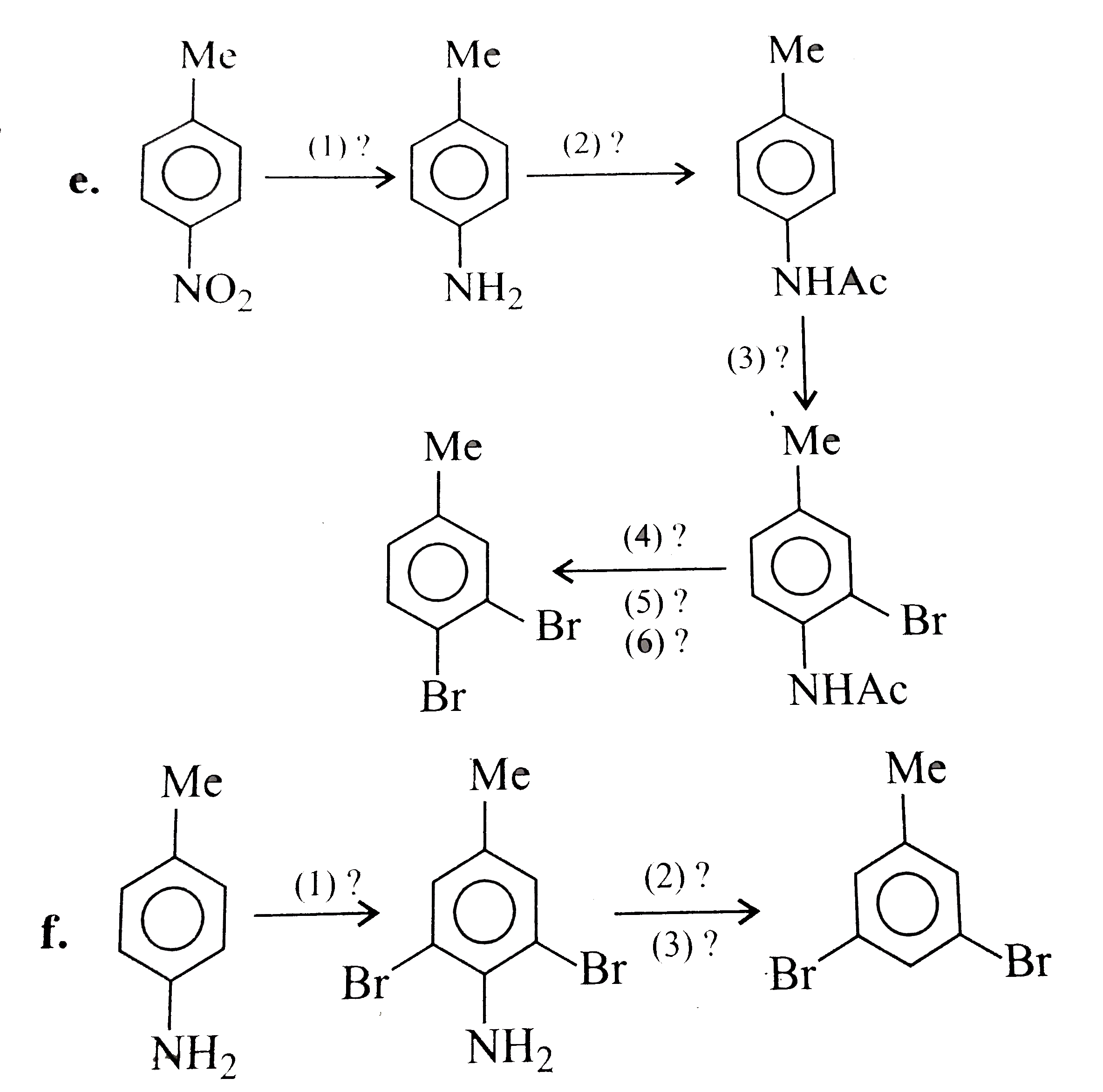 View Solution
View SolutionComplete the following reactions
a. `underset((A))(PhNH_(2)) overset(HNO_(2))underset(0.5^(@)C)rarr (B) underset(DH_(2)PO_(2))rarr(C)`
b.
c. `underset((A))(PhCH)=O + underset((B))(HCN) rarr (C) overset(LAH)rarr D`
d. `underset((A))(PhCH=O) +underset((B))(MeNO_(2)) overset(Theta)overset(OH)rarr overset(Fe,FeSO_(4))underset(H^(o+))rarrD`
e.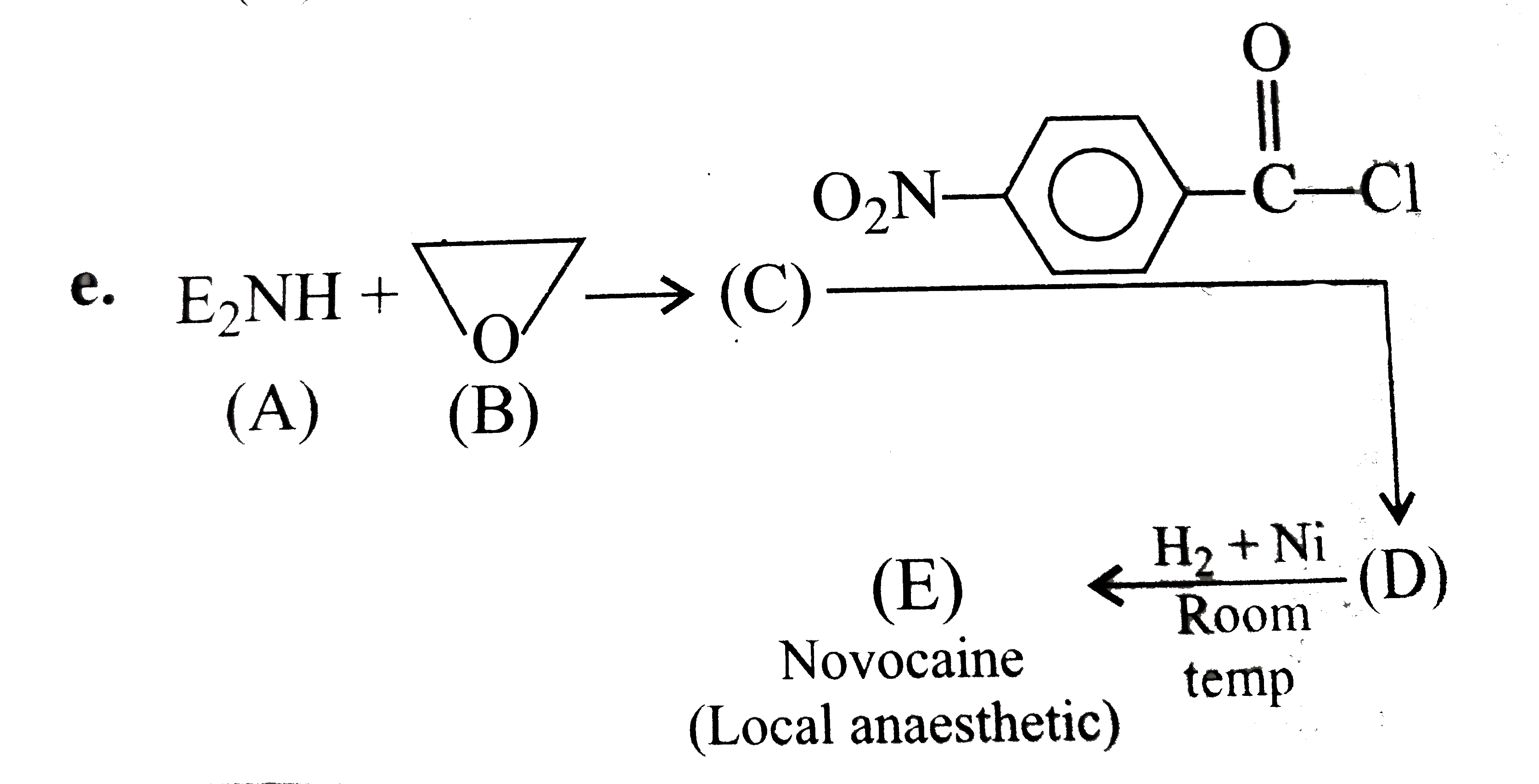 View Solution
View SolutionExplain the formation of the mixture `PhCH_(2)CHO (I)` and `PhCOMe (II)` when `PhCH(OH)CH_(2)NH_(2) (A)` is treated with `HNO_(2)`
02:51View Solutiona. Distinguish between `1^(@),2^(@)`, and `3^(@)` amines by using succine anhydride `(A)`.
b. What are the limitations of Hinsberg reagent?
c. Give the structural formula of a chiral compound `C_(8)H_(11)N(X)`, which dissolves in dilute `HCl` and evolves `N_(2)` gas with `HNO_(2)`.View SolutionIdentify compounds (A) through (E) in the following:
`p-NO_(2)C_(6)H_(4)OH overset(1.overset(Theta)OH)underset(2.EtBr)rarr (A)overset(Zn//HCI)rarr(B)`
`overset(NaNO_(2)//HCI)underset(5^(@)C)rarr(C) overset(PhOH)rarr(D)overset(LiAIH_(4))rarr(E)+(F)`05:42View SolutionIdentify compound (A) to (E) in the following:
 06:43View Solution
06:43View Solution(a) Identify the products:

(b) Identify `(A),(B),(X),(Y)` and `(Z)` in the following reactions.
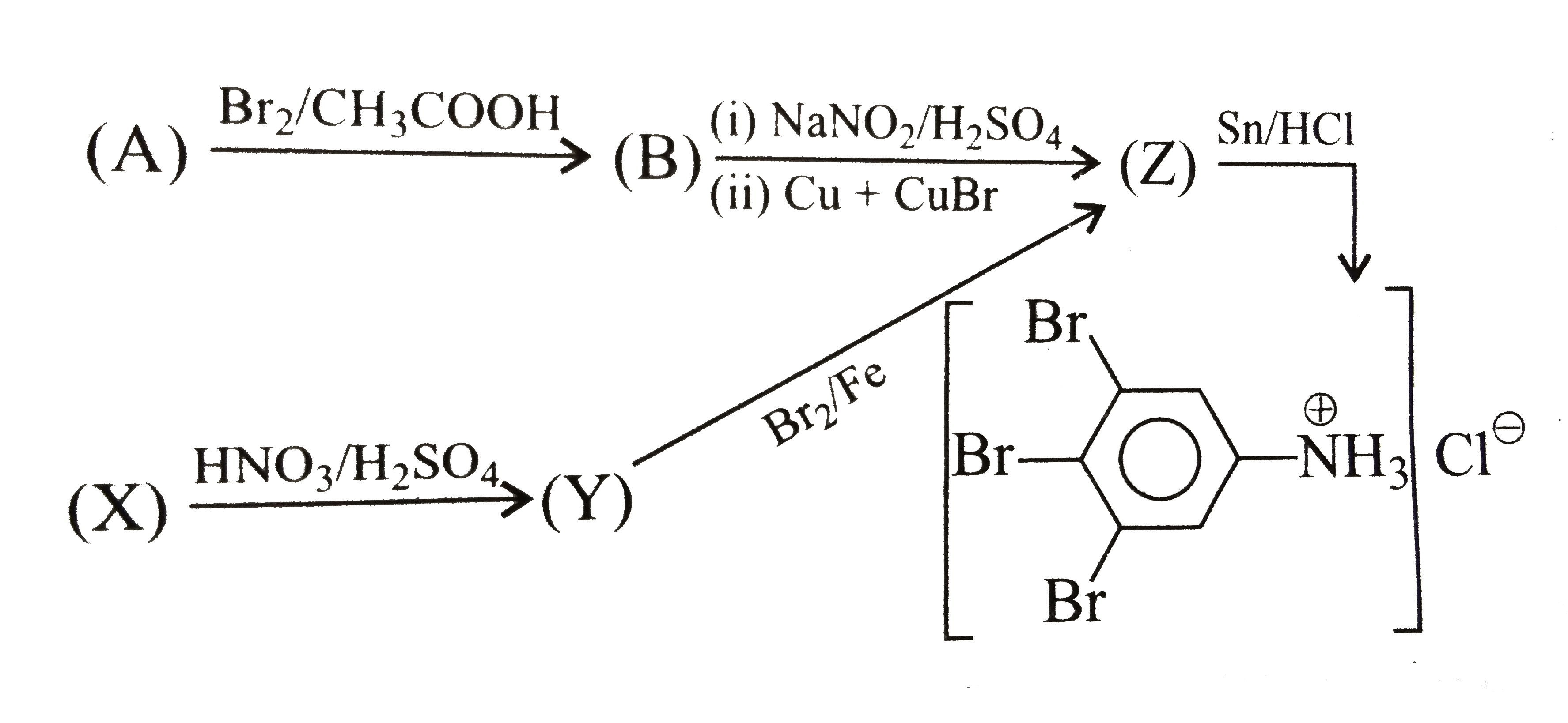
(c) Convert benzene to `o`-nitro aniline as the only product.18:35View SolutionAn organic compound (A) of molecular. Weight `135` on boiling with `NaOH` extracts a gas which gives dense white fumes on bringing a rod dipped in `HCl` near it. The alkaline solution thus obtained on acidification gives the precipitate of a compound `(B)`, having molecular weight `136`. treatment of `(A)` with `HNO_(2)` also yields `(B)`, whreas its treatement with `Br_(2)//KOH` gives (C). compound (C) reacts with cold `HNO_(2)` to give `(D)` which gives red colour with ceric ammonium nitrate. on the other hand, `(E)` and isomer of `(A)` on boiling with dilute `HCl` gives an acid `(F)`, havign molecular wheight `136`. on oxidation followed by heating, `(F)` gives an anhydride `(G)` which condenses with benzene in the presence of `AlCl_(3)` to give anthraquinone. give structures of `(A)` to `(G)` with proper reasoning.
16:05View SolutionThe aqueous solution of a nitrogen and chlorine containing organic compound `(A)` is acidic to litmus. `(A)` on treatment with aqueous `NaOH`gives a compound `(B)` on treatement with `C_(6)H_(5)SO_(2)CI` in the presence of `NaOH` gives an insoluble product `(C)` `C_(13)H_(13)NO_(2)S`. give the structures of `(A)` and `(B)`.
View SolutionA mixture of two organic compound is added to cold water. After filtration, water-insoluble compound `(A)` burns with a smoky flame and it does not respond to Lassaigne's and Beilsteins test. When a small amount of this is added to `NaHCO_(3)` solution, a colourless gas is evolved with effervescene. when this comopound is heated with `CH_(3)OH` in acidic medium, it gives the characteristic smell of oil of wintergreen. compound `(B)`, which is water soluble, burns with a non-smoky flame and its sodium extract is prepared with cane sugar. It gives the Prussian blue colour with freshly prepared solutions of `FeSO_(4)+2-3` drops `NaOH` and with few drops of `H_(2)SO_(4)`. when a small amount of this compound is heated in a dry test tube, a colourless gas is evolved that turns moist red litmus paper blue and a white residue is left. this white residue is dissolved in water and a drop of `CuSO_(4)` is added in the basic medium -a violet colour is obtained. identify the compounds `(A)` and `(B)` with the help of the reactions involved.
View Solution
Solved Examples questions and complete solutions for chapter ORGANIC COMPOUNDS WITH FUNCTIONAL GROUP of CENGAGE CHEMISTRY (HINGLISH) of Class 12
All Exercises from CENGAGE CHEMISTRY Class 12 CHEMISTRY ORGANIC COMPOUNDS WITH FUNCTIONAL GROUP
- Archives Analytical And Descriptive
- Archives Assertion-Reasoning
- Archives Fill In The Blanks
- Archives Multiple Correct
- Archives Single Correct
- Exercises Assertion And Reasoning
- Exercises Concept Application
- Exercises Linked Comprehension
- Exercises Multiple Correct
- Exercises Single Correct
- Exercises Subjective
- Illustration 15.1
- Solved Examples
